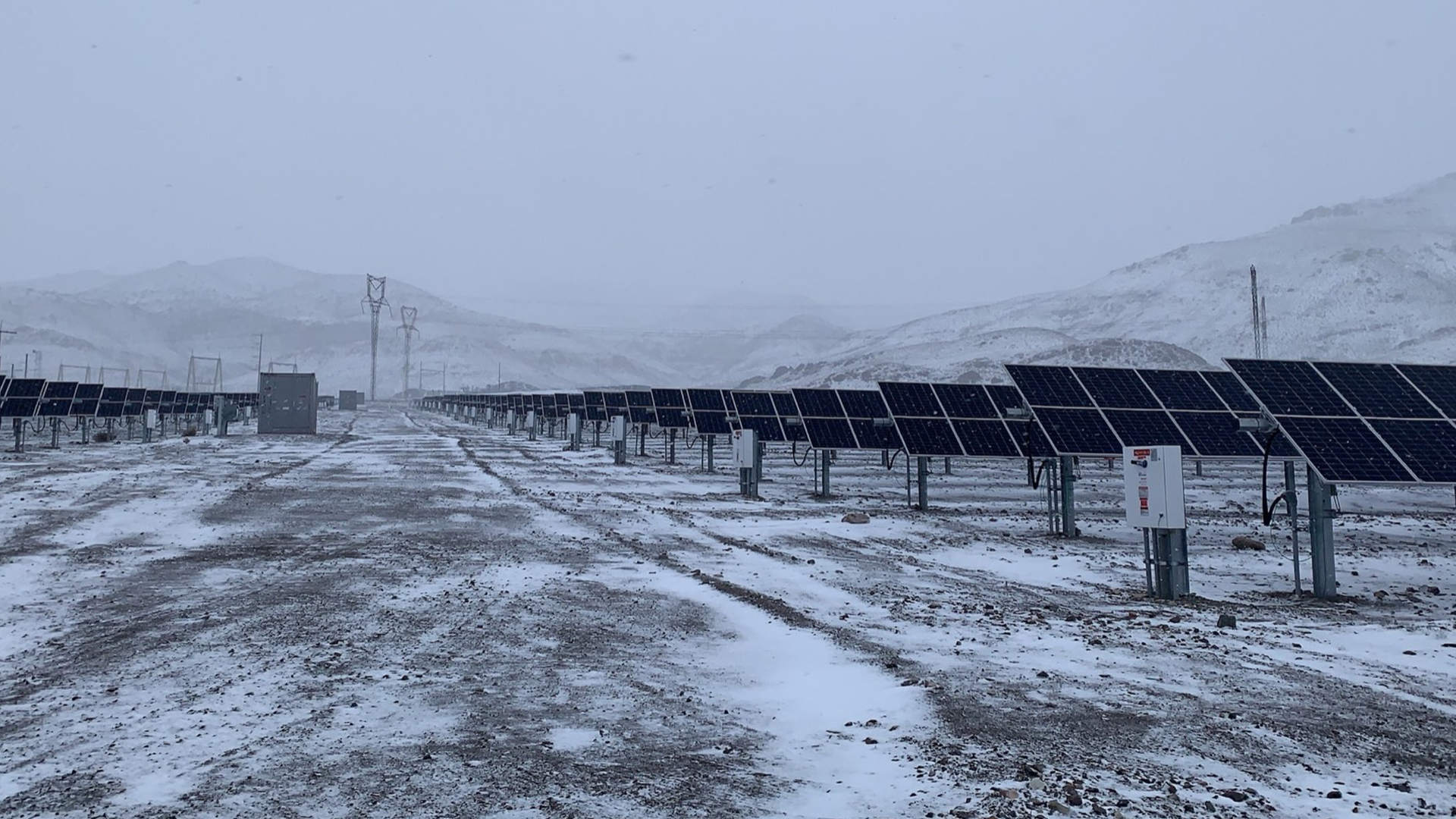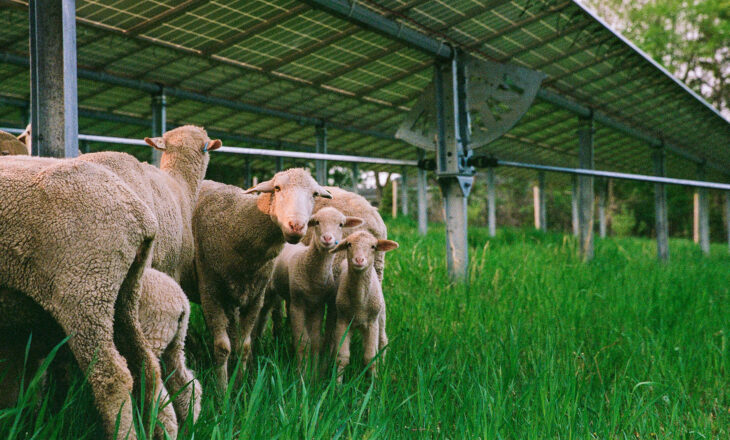
Las condiciones meteorológicas extremas son un claro enemigo de las plantas fotovoltaicas a gran escala. Una tendencia reciente de desastres extremos de viento y granizo cada vez más costosos refuerza este punto, causando estragos no sólo en las plantas reales en términos de plazos de construcción y producción, sino en la disponibilidad y las tarifas de los seguros comerciales para estas propiedades.
A la hora de elegir cómo defenderse, las plantas fotovoltaicas tienen dos opciones principales entre los seguidores solares de un eje: la respuesta activa y la pasiva.
La posición de defensa activa es una medida a mitad de camino en la mitigación de riesgos meteorológicos extremos
A la hora de elaborar una estrategia más sólida para hacer frente a las condiciones meteorológicas extremas, especialmente durante la construcción de plantas fotovoltaicas, la posición de defensa activa es casi inútil.
La tecnología de mitigación de las condiciones meteorológicas integrada en muchos seguidores de un solo eje no puede activarse hasta que la construcción está terminada o casi terminada, lo que significa que hay meses cruciales de construcción en los que estos seguidores quedan completamente expuestos. Esto también expone el calendario de construcción de la propia planta a tremendos contratiempos.
Y la culpa la tiene la posición de defensa activa.
“Los seguidores que dependen únicamente de la mitigación del riesgo de la posición de defensa activa necesitan que se conecten muchas cosas para que esa mitigación tenga lugar -anemómetros, redes inalámbricas, fuentes de alimentación, controladores de carga, baterías y motores, etc.- y hay vulnerabilidad al viento y al granizo durante todo el tiempo que dura la construcción”, dijo Jon Sharp, Vicepresidente de Marketing Estratégico de Productos de ARRAY Technologies. “La cuestión se reduce a una simple pregunta: ¿Cuánto tiempo se puede tolerar esa exposición al riesgo? ¿Pueden tolerarlo los prestamistas, los financieros y las aseguradoras? La respuesta es probablemente no”.
La posición de defensa activa también se dobla ante eventos combinados de viento y granizo, que según el Servicio Meteorológico Nacional son comunes. Al situarse en ángulos elevados para evitar los daños del granizo, los seguidores que dependen de la posición de defensa activa no pueden soportar el viento extremo, lo que aumenta en gran medida el riesgo de daños críticos.
“El proceso de construcción y funcionamiento de una planta solar fotovoltaica a gran escala se reduce a una ecuación constante de riesgo frente a recompensa”, dijo Sharp. “Depender de la mitigación activa de las condiciones meteorológicas extremas inclina la balanza a favor del riesgo”.
Hay una forma mejor.
La mitigación pasiva del viento, patentada y probada, ofrece mayores resultados
La mitigación pasiva del viento es una herramienta mucho más eficaz para la construcción de plantas fotovoltaicas a gran escala, ya que permite que los seguidores de un solo eje respondan mejor a los fenómenos meteorológicos extremos, especialmente cuando presentan una combinación de viento y granizo.
Con soluciones como la mitigación mecánica y pasiva del viento patentada por ARRAY Technologies, la mitigación meteorológica de los seguidores es activa desde el montaje de la primera fila, no de toda la planta.
“En ARRAY, tenemos una filosofía de simplicidad de ingeniería. Eso significa, literalmente, un número considerablemente menor de piezas, hasta 167 veces menos, de media, que un seguidor con respuesta de posición de defensa activa. Eso significa que no hay que esperar a la instalación de miles de componentes para obtener los beneficios de una estrategia de mitigación del riesgo meteorológico”, dijo Sharp. “Tener menos componentes también ofrece claras ventajas en cuanto a tiempo de actividad y producción a lo largo de la vida de una planta. Simplemente hay menos cosas que puedan fallar”.
La mitigación pasiva del viento ofrece un sistema totalmente automático y sin fallos, es decir, sin sensores ni electricidad de los que depender. Cuando llega el mal tiempo, el sistema simplemente se activa, girando automáticamente los módulos a la posición más segura para los vientos fuertes. Sin embargo, si se requiere una respuesta rápida, el software permite a los operadores autorizados controlar toda la planta solar para activar esa respuesta.
Construir sobre la base de un minucioso estudio de las condiciones meteorológicas extremas
El mayor desafío en la mitigación del riesgo meteorológico de las plantas fotovoltaicas proviene de aquellos eventos que producen tanto viento extremo como granizo, y la NOAA registró más de 4.600 eventos de este tipo sólo en 2018.
Cuando los seguidores se colocan en una orientación plana para evitar los efectos dañinos del viento, el granizo se presenta como un objetivo mayor. Cuando se utilizan posiciones más verticales para mitigar los daños del granizo, el viento hace su agosto. ARRAY ha colaborado con empresas de ingeniería aerodinámica y ha aprovechado sus tres décadas de experiencia para ayudar a ofrecer estrategias de mitigación de riesgos meteorológicos más reflexivas y coherentes.
La mitigación pasiva del riesgo está mejor equipada para manejar estas peligrosas combinaciones de viento y granizo, lo que aporta a las plantas fotovoltaicas mayor tranquilidad y opciones más flexibles. El ARRAY DuraTrack® HZ v3 ha sido diseñado y probado exhaustivamente para soportar algunas de las condiciones más duras del planeta, y es la cúspide del compromiso de ARRAY con la mitigación de la carga de viento totalmente integrada y automática.
“ARRAY siempre se compromete a establecer auténticas colaboraciones que ayuden a cada proyecto de planta a sacar el máximo provecho de su huella y tecnología”, dijo Sharp. “Hemos puesto una gran cantidad de diseño reflexivo en el DuraTrack para ayudar a las plantas a desarrollar un enfoque más completo para la mitigación del riesgo climático, pero nuestra principal preocupación es siempre asegurar que usted tiene la información y las herramientas que necesita para maximizar la producción, el tiempo de actividad y el retorno de la inversión. Compartimos esa visión”.
Para saber más sobre cómo ARRAY está liderando la mitigación del riesgo meteorológico, póngase en contacto con nosotros.
Click here for other articles by this author

